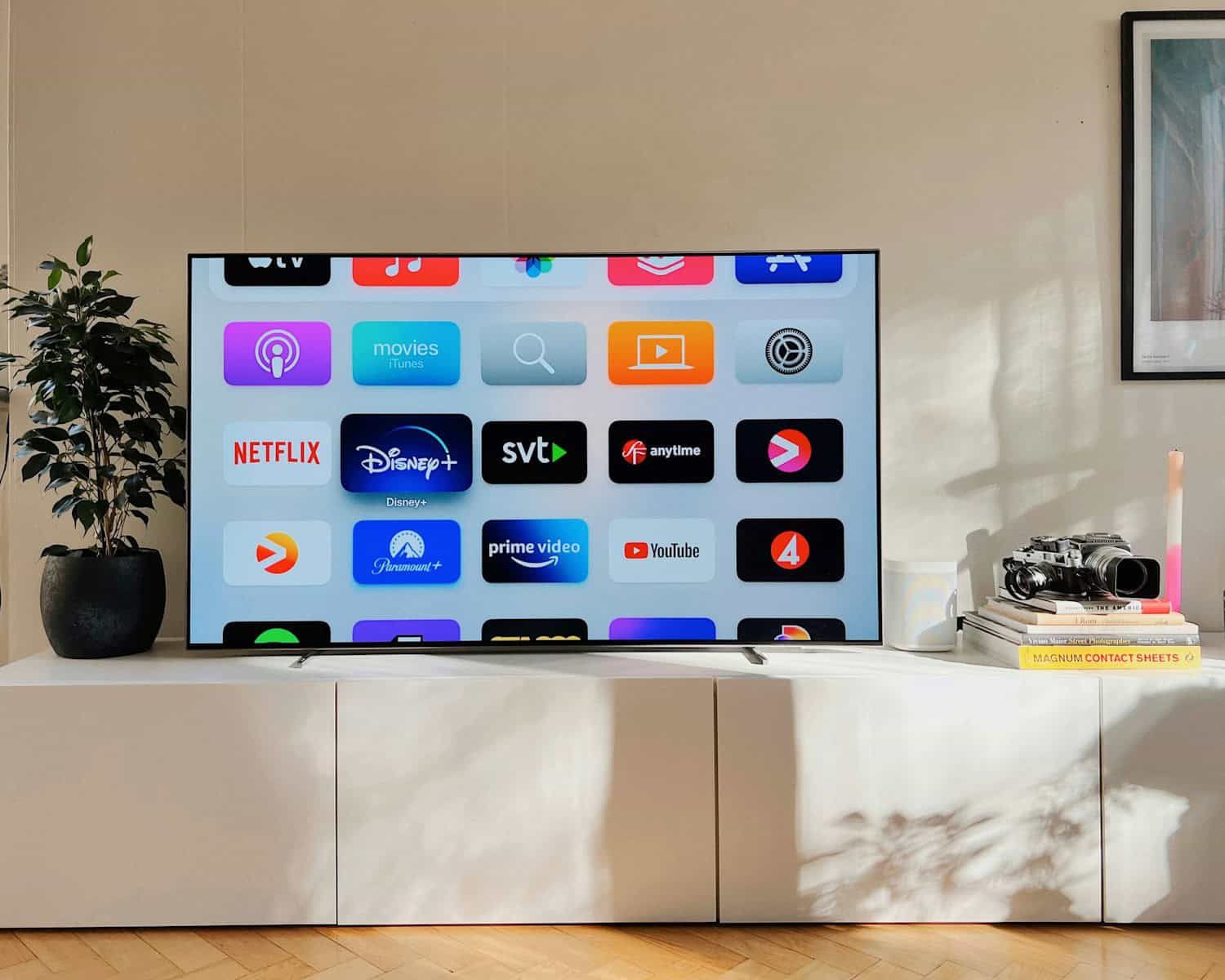Have you ever looked at a monitor specification and wondered what “2K resolution” means? It’s a term that often causes confusion in the display world. 2K resolution refers to displays with a horizontal resolution of approximately 2,000 pixels, with the most common 2K format being 2560×1440 pixels.
When shopping for a new monitor, you’ll see various resolution options. 2K sits between Full HD (1080p) and 4K in terms of image quality. Many people find 2K resolution provides a good balance of sharp image quality and reasonable pricing. This middle-ground position makes it popular for both work and entertainment purposes.
2K monitors deliver more detail than standard HD screens, which can improve your viewing experience significantly. The extra pixels create clearer text, more detailed images, and smoother curves on screen. This resolution has become a sweet spot for gamers and professionals who want better visual quality without the higher costs of 4K displays.
What Is 2K Resolution?
In 2026, display technology has advanced rapidly — with 4K now standard in TVs and monitors, 8K slowly entering the mainstream, and AI upscaling improving lower-resolution content. Yet, 2K resolution remains a widely used standard, especially in gaming monitors, laptops, and professional displays.
Let’s break down what 2K means, where it’s used, and how it stacks up against newer technologies today.
📏 What Exactly Is 2K Resolution?
2K resolution refers to any display with a horizontal pixel count of around 2,000 pixels.
The most common 2K format is 2560 × 1440 pixels, often called 1440p or QHD (Quad HD).
| Name | Resolution | Common Name | Aspect Ratio |
|---|---|---|---|
| 1080p | 1920 × 1080 | Full HD | 16:9 |
| 2K / 1440p | 2560 × 1440 | QHD / WQHD | 16:9 |
| 4K | 3840 × 2160 | UHD | 16:9 |
| 5K | 5120 × 2880 | Retina 5K | 16:9 |
| 8K | 7680 × 4320 | UHD-2 | 16:9 |
So while “2K” technically means 2048 × 1080 in cinema standards (DCI 2K), in consumer devices it’s used interchangeably with 2560 × 1440 — a resolution that offers 77% more pixels than 1080p but uses far less GPU power than 4K.
(Source: WhatIsMyScreenResolution.org, Greenlit Content)
🎮 2K in 2026: Still the Sweet Spot for Gamers
In 2026, 2K (1440p) remains the most popular gaming resolution for PC players.
Here’s why:
- Performance balance: Even mid-range GPUs like the NVIDIA RTX 4070 or AMD RX 7800 XT can easily push 120–165 FPS at 1440p on ultra settings.
- Visual clarity: 2K offers noticeably sharper visuals than 1080p without the heavy performance cost of 4K.
- High refresh rates: Most 2K monitors now support 165Hz–240Hz, perfect for competitive gaming.
- AI upscaling: Technologies like DLSS 3.5, FSR 3, and Intel XeSS make 2K look nearly 4K-quality on supported titles.
| Resolution | Average FPS (RTX 4070 Ti SUPER, 2026 Titles) | Typical Monitor Refresh Rate |
|---|---|---|
| 1080p | 180–240 FPS | 144–360Hz |
| 2K (1440p) | 120–165 FPS | 165–240Hz |
| 4K | 70–100 FPS | 120–144Hz |
| 8K | 30–50 FPS | 60Hz (limited) |
📺 2K vs. 4K and 8K in 2026
🆚 2K vs. 4K
- 4K offers 4x the pixel count of 1080p and about 2.25x more pixels than 2K.
- However, 4K requires more GPU power, and for smaller screens (under 32 inches), the visible difference between 2K and 4K is minimal.
- In 2026, 4K is the standard for TVs, but 2K remains dominant for gaming monitors and laptops.
🆚 2K vs. 8K
- 8K (7680×4320) is still niche in 2026 — mostly used in professional video editing, medical imaging, and luxury TVs.
- 8K content remains limited, and AI upscaling often bridges the gap for 2K and 4K sources.
- For most users, the jump from 2K to 8K isn’t worth the cost or performance hit.
💻 2K in Laptops and Productivity
In 2026, many premium ultrabooks and MacBooks use 2K or 3K (2880×1800) displays as a balance between clarity and battery efficiency.
- Text and UI elements look crisp without scaling issues.
- Battery life is better than on 4K laptops.
- Content creators still benefit from high pixel density for photo and video editing.
🧠 AI Upscaling and Display Enhancements
Modern GPUs and TVs now use AI upscaling to make lower-resolution content look sharper:
- NVIDIA DLDSR and DLSS 3.5 upscale 2K to 4K with minimal quality loss.
- Smart TVs from Samsung, LG, and Sony use AI processors to upscale 1080p or 2K movies into near-4K clarity.
This means a 2K display in 2026 can look better than ever, especially when paired with AI-enhanced rendering.
🔋 Efficiency and Cost Advantages
| Feature | 2K | 4K | 8K |
|---|---|---|---|
| GPU Power Demand | Moderate | High | Very High |
| Cost (Monitor) | $250–$400 | $400–$800 | $1500+ |
| Ideal Use Case | Gaming, productivity | Home theater, creative work | Research, pro video |
| Visual Clarity (27″) | Excellent | Slightly better | Overkill |
2K offers the best balance of sharpness, performance, and price — making it the go-to for gamers, students, and professionals alike.
🔮 The Future of 2K Displays
While 4K and 8K continue to dominate marketing headlines, 2K remains a practical and efficient resolution in 2026.
Expect to see:
- Higher refresh 2K OLED panels (up to 360Hz).
- Mini-LED and MicroLED 2K monitors with deeper contrast and better HDR.
- AI-assisted rendering making 2K look indistinguishable from native 4K.
✅ Final Thoughts
2K resolution may not sound cutting-edge in 2026, but it’s far from obsolete. It delivers:
- Excellent image clarity
- High frame rates
- Reasonable power efficiency
- Affordable pricing
For most users — especially gamers and professionals — 2K (1440p) remains the sweet spot between performance and visual fidelity.
Unless you’re editing 8K video or watching ultra-high-definition films on a massive screen, 2K is still the perfect everyday resolution.
Key Takeaways
- 2K resolution displays have approximately 2,000 pixels horizontally, typically in a 2560×1440 format.
- The increased pixel count offers noticeably improved image quality compared to standard HD displays.
- 2K monitors provide a balance between performance, visual quality, and cost for most users.
Understanding 2K Resolution
2K resolution offers a middle ground between Full HD and 4K displays, providing enhanced visual quality without requiring as much processing power as higher resolutions. The term “2K” has several interpretations in consumer electronics, which sometimes leads to confusion.
Defining 2K and Its Variants
2K resolution generally refers to displays with a horizontal pixel count in the 2,000-pixel range. The standard 2K resolution defined by Digital Cinema Initiatives (DCI) is 2048 × 1080 pixels, commonly used in movie theaters.
However, in consumer electronics, 2K often refers to the QHD (Quad HD) resolution of 2560 × 1440 pixels. This can be confusing, as technically this resolution exceeds the 2,000-pixel mark horizontally.
Many computer monitors and smartphones advertise “2K” resolution when they offer 2560 × 1440 displays. Some manufacturers might label their 2560 × 1440 displays as “Quad HD” rather than “2K” to avoid confusion.
Comparison to Full HD and 4K Resolutions
Full HD (1920 × 1080 pixels) offers approximately 2 million pixels total, while standard 2K (2048 × 1080) provides about 2.2 million pixels. The more common consumer 2K variant (2560 × 1440) delivers roughly 3.7 million pixels.
In contrast, 4K resolution (3840 × 2160) packs about 8.3 million pixels into the display. This comparison shows why 2K represents a significant step up from Full HD.
| Resolution Name | Pixel Dimensions | Total Pixel Count |
|---|---|---|
| Full HD (1080p) | 1920 × 1080 | ~2 million |
| DCI 2K | 2048 × 1080 | ~2.2 million |
| QHD (Consumer 2K) | 2560 × 1440 | ~3.7 million |
| 4K UHD | 3840 × 2160 | ~8.3 million |
Relevance of Aspect Ratio and Pixel Count
The aspect ratio plays a crucial role in how 2K resolution appears on different devices. Standard 2K (2048 × 1080) has a 1.90:1 ratio, while consumer 2K (2560 × 1440) uses a 16:9 ratio, matching most modern displays.
Pixel count affects image quality, with higher counts producing sharper images. At 2560 × 1440, consumer 2K offers 78% more pixels than Full HD, creating noticeably crisper visuals.
Viewing distance matters when considering resolution benefits. On smaller screens or at greater distances, the difference between Full HD and 2K may be less noticeable to the human eye.
2K serves as an excellent balance for gamers, offering better visuals than 1080p while requiring less processing power than 4K, allowing for higher frame rates with modern graphics cards.
Applications of 2K Resolution
2K resolution offers a balanced blend of visual quality and performance across several key industries. It provides enough pixel density for detailed work while remaining accessible for most modern hardware.
Gaming and Gaming Monitors
2K resolution has become a sweet spot for gamers seeking better visuals without sacrificing performance. At 2560×1440 pixels (the most common 2K gaming resolution), players enjoy significantly sharper images than 1080p while maintaining higher frame rates than 4K gaming requires.
Many gaming monitors now feature 2K resolution with high refresh rates of 144Hz or even 240Hz. This combination delivers both crisp visuals and smooth motion, essential for competitive gameplay.
Popular esports titles like Counter-Strike and Fortnite run exceptionally well at 2K, allowing gamers to spot enemies more clearly while maintaining competitive framerates.
For strategy games and RPGs, the extra detail helps players appreciate environmental design and read in-game text more easily.
Professional Video Production
In video production, 2K resolution (typically 2048×1080) serves as an important format for filmmakers and content creators. Many digital cinema cameras capture footage natively in 2K, offering a professional-quality baseline.
2K provides enough detail for most broadcast standards while keeping file sizes manageable during post-production workflows. This balance is crucial when handling hours of raw footage.
Film studios often use 2K for visual effects work, as it allows artists to create detailed composites without the extreme processing demands of 4K or higher resolutions.
The DCI (Digital Cinema Initiatives) standard includes a specific 2K specification (2048×1080) used in many commercial theaters worldwide.
Digital Content and Video Editing
Content creators appreciate 2K resolution for its practical balance in video editing workflows. Programs like Adobe Premiere Pro run smoothly with 2K footage on mid-range computers, unlike more demanding 4K media.
For YouTube and social media content, 2K offers noticeably better quality than 1080p without the storage and bandwidth requirements of 4K. This makes it ideal for creators with limited technical resources.
2K monitors provide enough screen real estate for complex editing timelines and multiple panels without requiring expensive graphics hardware upgrades.
Photo editors benefit from 2K displays as well, gaining enough resolution to see important details while editing without the price premium of higher-resolution monitors.
For streaming platforms, 2K content strikes a balance between visual quality and accessibility for viewers with various internet speeds.
2K Resolution in the Marketplace
The 2K resolution standard has created both opportunities and confusion in the display market. Manufacturers and retailers often use varying terminology when marketing 2K products, leading to different interpretations of what constitutes a true 2K display.
Consumer 2K Displays
Many displays marketed as “2K” actually feature QHD resolution (2560×1440 pixels), which differs from the DCI 2K cinema standard (2048×1080 pixels). This inconsistency causes confusion for consumers seeking 2K products.
Manufacturers like Dell, ASUS, and LG offer monitors labeled as 2K, typically referring to QHD resolution. These displays have become increasingly popular for gaming, professional work, and general computing.
The appeal of these monitors lies in their balance between Full HD (1920×1080) and 4K UHD (3840×2160). They provide sharper image quality than Full HD without the higher costs and performance demands of 4K displays.
Popular Consumer 2K Display Types:
- Gaming monitors (high refresh rates)
- Professional design monitors (color accuracy)
- General office use displays
- Ultrawide monitors (typically 3440×1440)
High-Definition Video Compatibility
2K resolution works well with high-definition video content. Most streaming platforms offer content in various resolutions, with 2K-compatible options becoming more common.
Content originally shot in 4K can be downscaled to 2K with minimal quality loss. Similarly, Full HD content can be upscaled to 2K using video enhancer algorithms, though results vary in quality.
HDMI 2.0 and DisplayPort 1.2 or higher connections support 2K resolution at refresh rates of 144Hz or higher. This makes them ideal for both video consumption and gaming applications.
Many video editing professionals work in 2K resolution as a compromise. It provides enough detail for precise editing while requiring less processing power than 4K workflows.
Upgrading to 2K: Considerations and Costs
When upgrading to a 2K display, consumers should consider their specific needs. For gaming, a 2K monitor with high refresh rates (120Hz+) offers an excellent balance between visual quality and performance.
Professional users should look for monitors with accurate color reproduction and possibly IPS panel technology. These features ensure precise representation of graphics, photos, and videos.
Price Range for 2K Monitors:
- Budget options: $200-300
- Mid-range: $300-500
- Premium: $500+
Graphics card compatibility is crucial when upgrading. While most modern GPUs handle 2K resolution, older cards may struggle with demanding applications or games at this resolution.
The value proposition of 2K makes it an attractive middle ground. It provides a noticeable improvement over Full HD without the steep price increase and performance demands of 4K displays.
Technical Aspects and Future Trends
2K resolution technology continues to evolve in both capabilities and applications, balancing image quality with practical considerations of bandwidth and processing power.
Advancements in Resolution Technology
2K resolution, typically referring to displays with approximately 2,000 horizontal pixels, has established itself as a middle ground between standard HD (1080p) and 4K UHD. The most common 2K format is WQHD (2560×1440), offering 78% more pixels than 1080p while requiring less processing power than 4K.
Modern 2K displays incorporate technologies like HDR (High Dynamic Range) and higher refresh rates, enhancing visual fidelity beyond just pixel count. These improvements deliver sharper images with better color accuracy and contrast.
Video upscaling technology has also advanced significantly, allowing lower-resolution content to look better on 2K screens. This is particularly important since not all content is natively available in 2K resolution.
The Future of 2K and Beyond
While 4K and even 8K displays are increasing in popularity, 2K resolution maintains relevance due to its balance of quality and performance. For gaming especially, many prefer 2K monitors because they allow for higher frame rates than 4K with today’s graphics cards.
Industry experts predict 2K will remain a sweet spot for desktop monitors and smaller TVs for several years. The horizontal field of view at typical viewing distances makes the jump to 4K less noticeable on smaller screens.
Content creators continue to produce material optimized for 2K, particularly for streaming platforms where bandwidth considerations remain important. As compression technologies improve, the visual difference between 2K and 4K streaming becomes less pronounced.
Impact on Consumer Choices
Consumers now face more nuanced decisions when selecting displays. The choice between 720p, 1080p, 2K, and 4K capabilities depends on screen size, viewing distance, and intended use.
For gaming and productivity on 24-27″ monitors, 2K often provides the optimal balance of crispness and performance. The immersive viewing experience at this resolution satisfies most users without the premium cost of 4K.
Budget considerations remain significant, with 2K displays now available at price points previously occupied by 1080p models. This accessibility has helped 2K become mainstream rather than premium.
Media consumption habits also influence decisions. Those primarily watching high-definition videos from streaming services may find limited benefit in resolutions beyond 2K, as many platforms compress content heavily regardless of resolution.
Frequently Asked Questions
People have many questions about 2K resolution when shopping for monitors and TVs. These common questions address key aspects of 2K resolution including its dimensions, comparisons to other resolutions, and visual benefits.
What are the dimensions of 2K resolution?
True 2K resolution, as defined by the Digital Cinema Initiatives (DCI), is 2048 × 1080 pixels. This standard was created specifically for digital cinema.
However, in consumer electronics, the term “2K” often refers to displays with a resolution of 2560 × 1440 pixels. This consumer version of 2K is more commonly labeled as Quad HD or 1440p.
How does 2K resolution compare to 1080p?
2K resolution offers significantly more pixels than standard 1080p (1920 × 1080). True DCI 2K (2048 × 1080) provides only slightly more horizontal pixels than 1080p.
Consumer 2K (2560 × 1440) delivers approximately 77% more pixels than 1080p resolution. This higher pixel count results in sharper images and better detail.
The difference becomes most noticeable when viewing content on larger screens or when sitting closer to the display.
Is there a difference between 2K and 1440p resolution?
Yes, there is a technical difference. True 2K (2048 × 1080) is not the same as 1440p (2560 × 1440).
However, in marketing and common usage, “2K” often refers to 1440p displays. This has created confusion in the marketplace.
The 1440p resolution is sometimes called Quad HD because it offers four times the pixels of a 720p HD display.
What is the pixel density of 2K resolution screens?
Pixel density varies based on screen size. For a 27-inch monitor with 2560 × 1440 resolution, the pixel density is approximately 109 pixels per inch (PPI).
By comparison, a 27-inch 1080p monitor has about 82 PPI. Higher pixel density generally means sharper images and text.
The smaller the screen with 2K resolution, the higher the pixel density will be, resulting in even crisper visuals.
Can 2K resolution be considered a type of 4K resolution?
No, 2K and 4K are distinct resolution standards. 4K offers approximately four times the pixels of 1080p, while 2K offers fewer pixels than 4K.
True 4K (UHD) resolution is 3840 × 2160 pixels, which is significantly higher than 2K’s 2560 × 1440 pixels.
The name “2K” comes from having approximately 2,000 horizontal pixels, while “4K” has approximately 4,000 horizontal pixels.
How does 2K resolution impact visual quality on screens?
2K resolution provides noticeably sharper images compared to 1080p, especially on larger displays. Text appears crisper and details in photos and videos are more defined.
For gaming, 2K offers a good balance between visual quality and performance. It requires less processing power than 4K while still providing excellent visuals.
Content creators often prefer 2K monitors as they provide more screen real estate for applications while maintaining sharp image quality.







